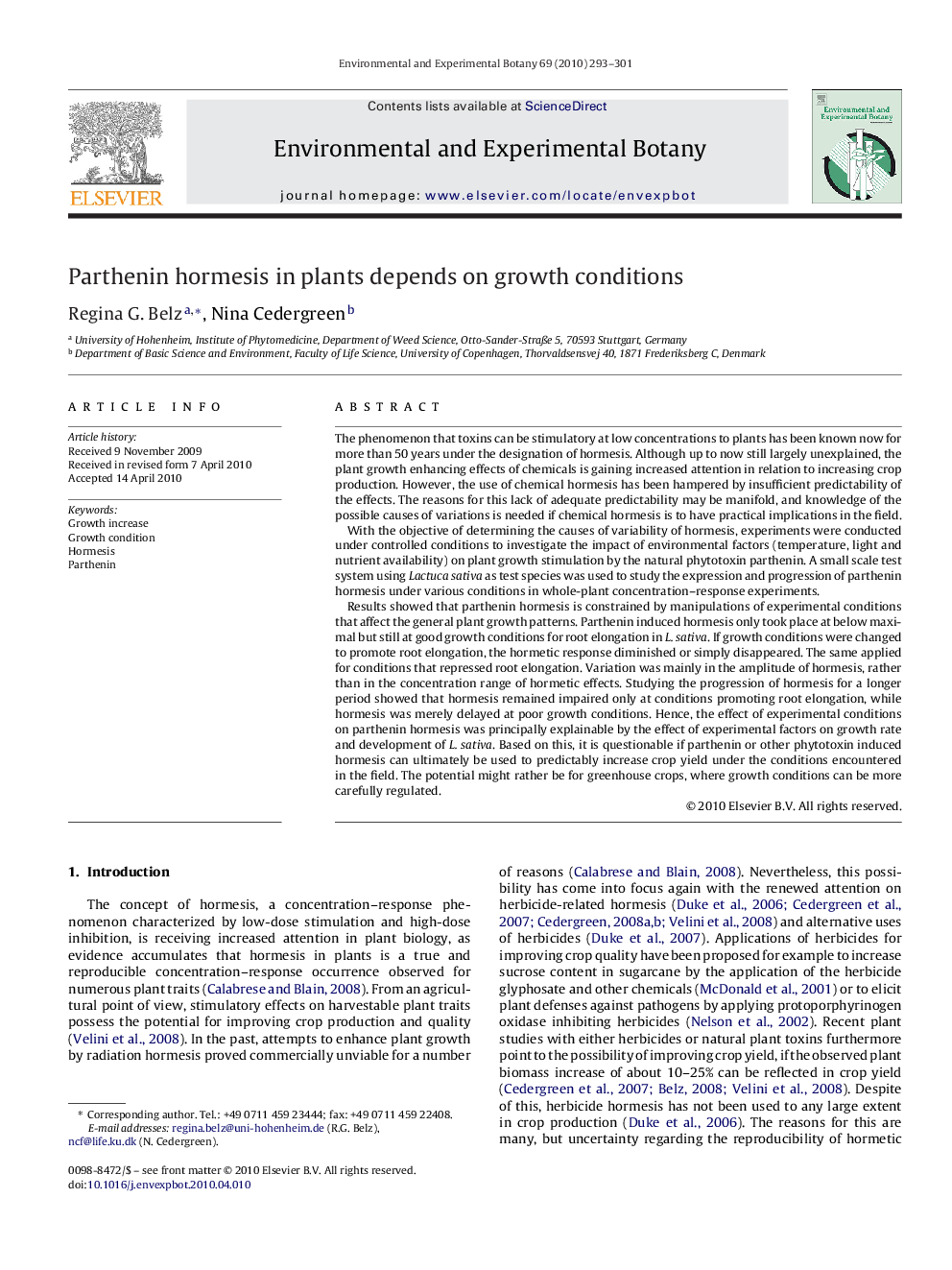| کد مقاله | کد نشریه | سال انتشار | مقاله انگلیسی | نسخه تمام متن |
|---|---|---|---|---|
| 4555144 | 1329245 | 2010 | 9 صفحه PDF | دانلود رایگان |

The phenomenon that toxins can be stimulatory at low concentrations to plants has been known now for more than 50 years under the designation of hormesis. Although up to now still largely unexplained, the plant growth enhancing effects of chemicals is gaining increased attention in relation to increasing crop production. However, the use of chemical hormesis has been hampered by insufficient predictability of the effects. The reasons for this lack of adequate predictability may be manifold, and knowledge of the possible causes of variations is needed if chemical hormesis is to have practical implications in the field.With the objective of determining the causes of variability of hormesis, experiments were conducted under controlled conditions to investigate the impact of environmental factors (temperature, light and nutrient availability) on plant growth stimulation by the natural phytotoxin parthenin. A small scale test system using Lactuca sativa as test species was used to study the expression and progression of parthenin hormesis under various conditions in whole-plant concentration–response experiments.Results showed that parthenin hormesis is constrained by manipulations of experimental conditions that affect the general plant growth patterns. Parthenin induced hormesis only took place at below maximal but still at good growth conditions for root elongation in L. sativa. If growth conditions were changed to promote root elongation, the hormetic response diminished or simply disappeared. The same applied for conditions that repressed root elongation. Variation was mainly in the amplitude of hormesis, rather than in the concentration range of hormetic effects. Studying the progression of hormesis for a longer period showed that hormesis remained impaired only at conditions promoting root elongation, while hormesis was merely delayed at poor growth conditions. Hence, the effect of experimental conditions on parthenin hormesis was principally explainable by the effect of experimental factors on growth rate and development of L. sativa. Based on this, it is questionable if parthenin or other phytotoxin induced hormesis can ultimately be used to predictably increase crop yield under the conditions encountered in the field. The potential might rather be for greenhouse crops, where growth conditions can be more carefully regulated.
Journal: Environmental and Experimental Botany - Volume 69, Issue 3, December 2010, Pages 293–301